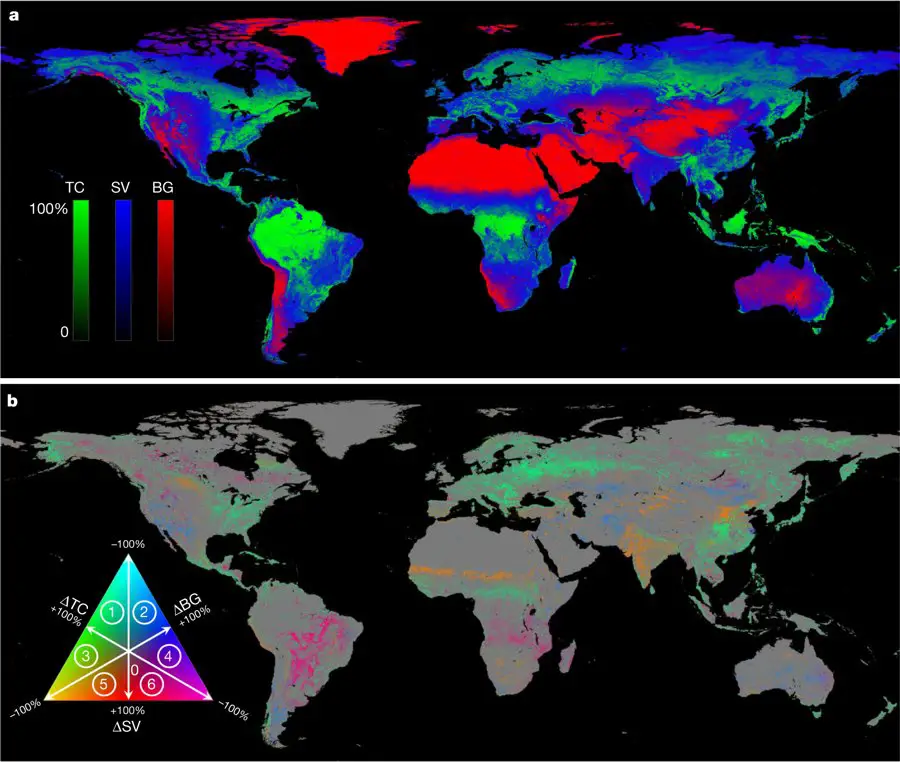On A Global Scale Tree Cover Growth Has Outweighed Tree Cover Loss Recent Research Claims


a, Mean annual estimates. b, Long-term change estimates. Both mean and change estimates are expressed as per cent of pixel area at 0.05° × 0.05° spatial resolution. Pixels showing a statistically significant trend (n = 35, two-sided Mann–Kendall test, P < 0.05) in either TC, SV or BG are depicted on the change map. Circled numbers in the colour legend denote dominant change directions: 1, TC gain with SV loss; 2, BG gain with SV loss; 3, TC gain with BG loss; 4, BG gain with TC loss; 5, SV gain with BG loss; and 6, SV gain with TC loss. Credit: Nature (2018). DOI: 10.1038/s41586-018-0411-9
Source: phys.org
Land change is a cause and consequence of global environmental change. Changes in land use and land cover considerably alter the Earth’s energy balance and biogeochemical cycles, which contributes to climate change and—in turn—affects land surface properties and the provision of ecosystem services. However, quantification of global land change is lacking. ..
Source: Nature – International Journal of Science
The paragraph above is an extract from research published in the Journal Nature. It was conducted by a group of scientists from the University of Maryland, the State University of New York and NASA’s Goddard Space Flight Center.
According to the results of the study, which is based on data gathered by satellite that has been monitoring tree growth and loss, the growth of new trees during the last 35 years has significantly outweighed the loss in the world.
Most people all over the world live with the idea that on a global scale the tree cover is declining because of the intense cutting down of trees in the forests, especially in the rainforests.
However, the research discussed above has proved this theory wrong claiming that the world tree cover is in reality expanding.
The scientists who took part in the study examined the information provided by high-level radiometers with detailed resolution over a group of 16 weather satellites in the span of 35 years between 1982 to 2016. By analyzing the data provided every day, the researchers noticed some minor repeated changes that eventually led to more significant changes in the longer period.
2.24 million square kilometers is the approximate number by which new tree cover growth exceeded tree cover loss according to the data analyzed during the whole time of the research .
The scientists point out that this is nearly as large as Texas and Alaska together.
According to the results provided by the research usually, the new tree cover grows in areas that were before unproductive, like tundra, deserts, mountains or cities for example. And surprisingly, a big deal of this new tree cover is a result of reforestation done by people – like in China and Africa for example.
Another reason for the expansion of forest growth is global warming. It turns out that the warmer climate has contributed to increasing treelines in certain mountainous areas and forests have entered the tundra. Trees also have been growing intensively in certain areas in Russia and the U.S where massive abandonment of farms have taken place.
Finally, according to the information stated in the research, people are actually responsible for around 60 percent of the newly grown trees in the world.
The scientists who took part in the study add that the technique they worked with during the process of research could also be successfully used to monitor changes in tree cover which occur due to global warming in the future.

